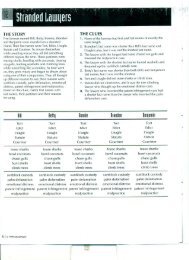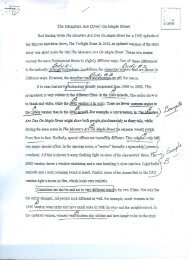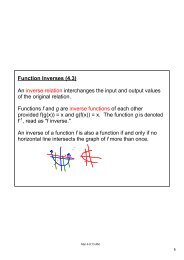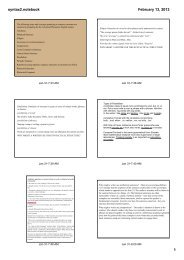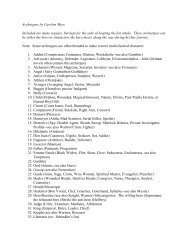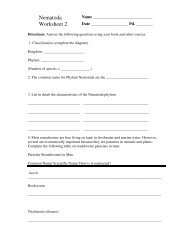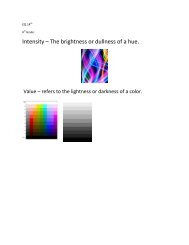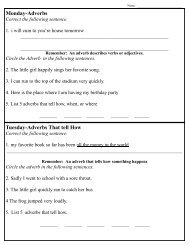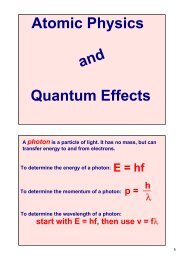Create successful ePaper yourself
Turn your PDF publications into a flip-book with our unique Google optimized e-Paper software.
Copyright © Glencoe/McGraw-Hill, a division of the McGraw-Hill Companies, Inc.<br />
Name Date Class<br />
1<br />
<strong>Study</strong> Guide<br />
Directions: For each atom listed, indicate how many electrons need to be gained or lost for the atom<br />
to achieve a stable electron configuration.<br />
1. sodium<br />
2. aluminum<br />
3. sulfur<br />
4. phosphorus<br />
5. neon<br />
6. carbon<br />
7. nitrogen<br />
8. magnesium<br />
9. fluorine<br />
Directions: Unscramble the terms to fill in the blanks.<br />
When elements bond to form (10) (scunpoodm), both their<br />
(11) (troppsiree) and their (12) (loorc) may<br />
change. Elements (13) (nagi) or (14) (selo)<br />
electrons when they bond, and this gives them a more (15) (bleats)<br />
electron configuration. All stable electron configurations are the same as the<br />
(16) (steaner) noble gas.<br />
Stability in Bonding<br />
A chemical (17) (roulamf) tells how many of each type of atom are<br />
in the compound. A chemical bond is the (18) (rofec) that holds atoms<br />
together.Only (19) (route) electrons are involved in bonding.<br />
Chapter<br />
20<br />
Stability in Bonding 73





